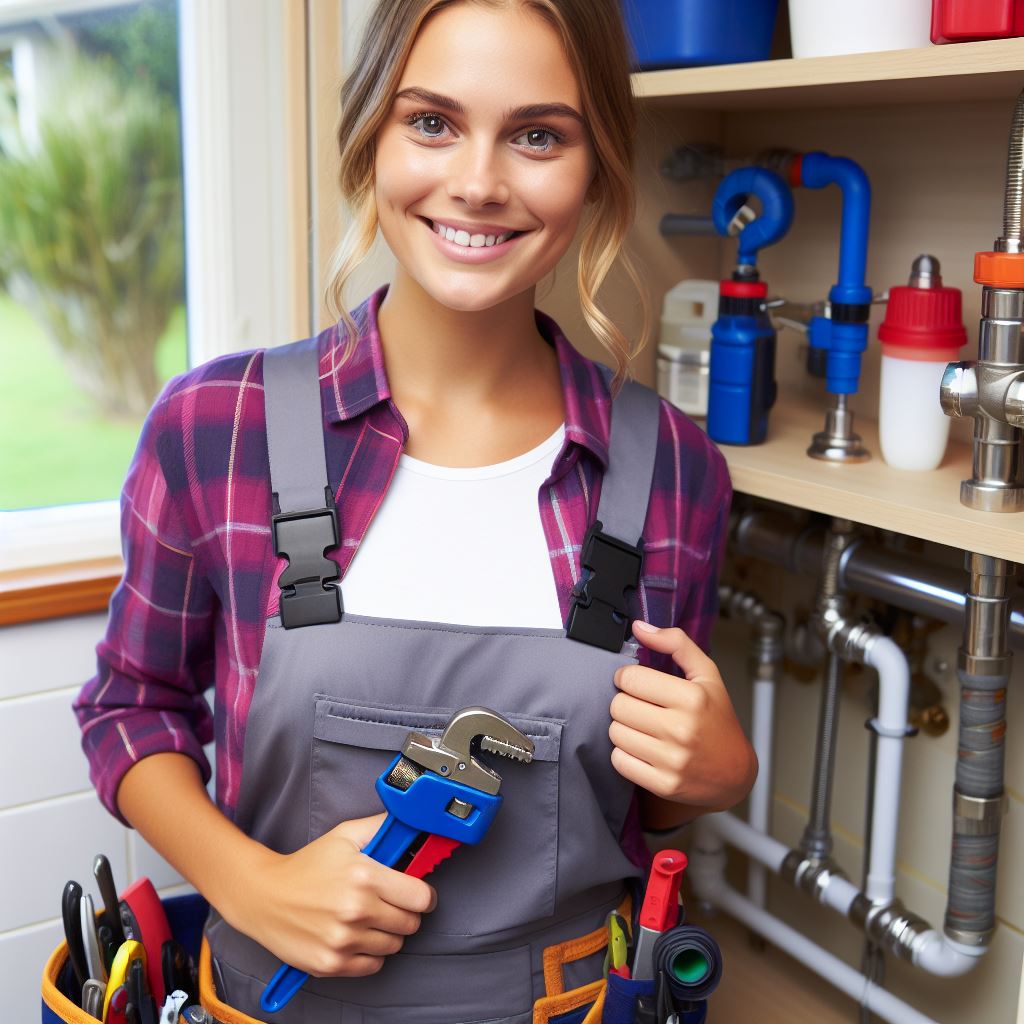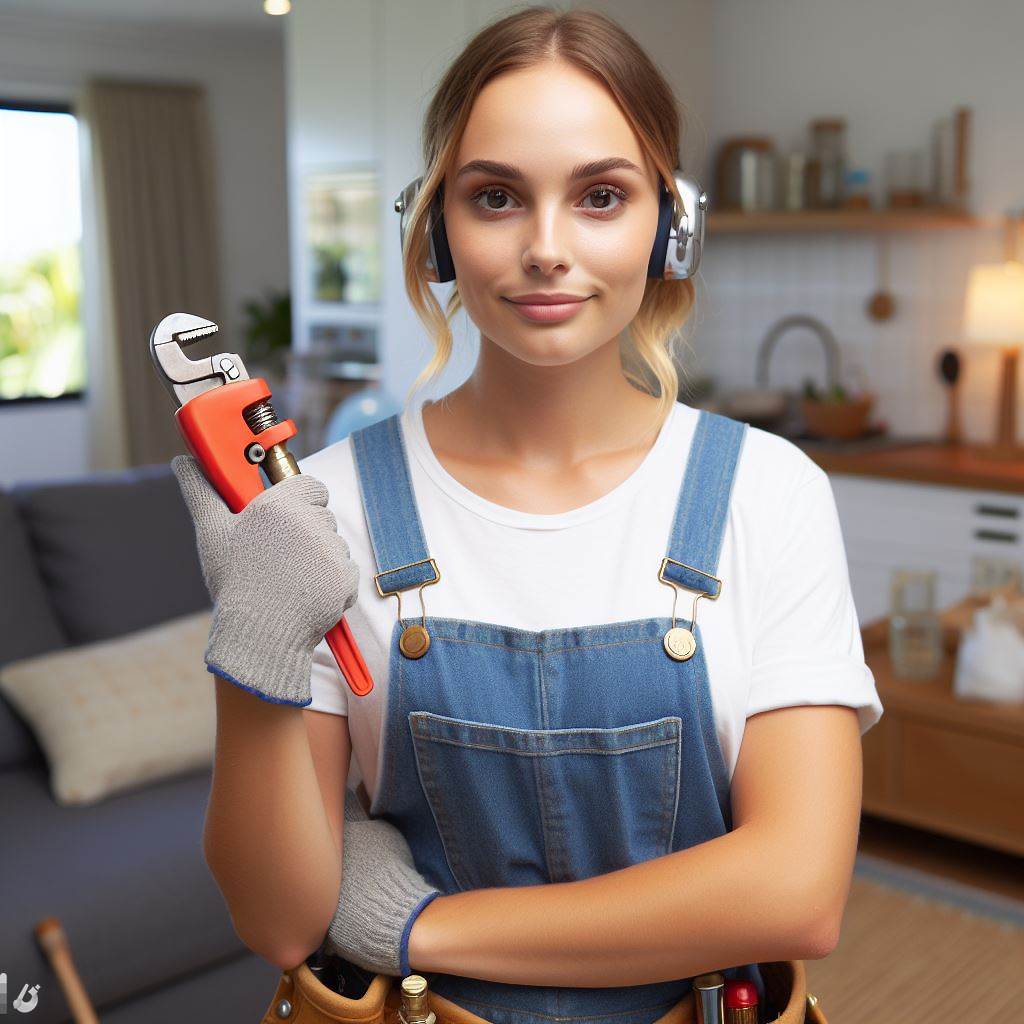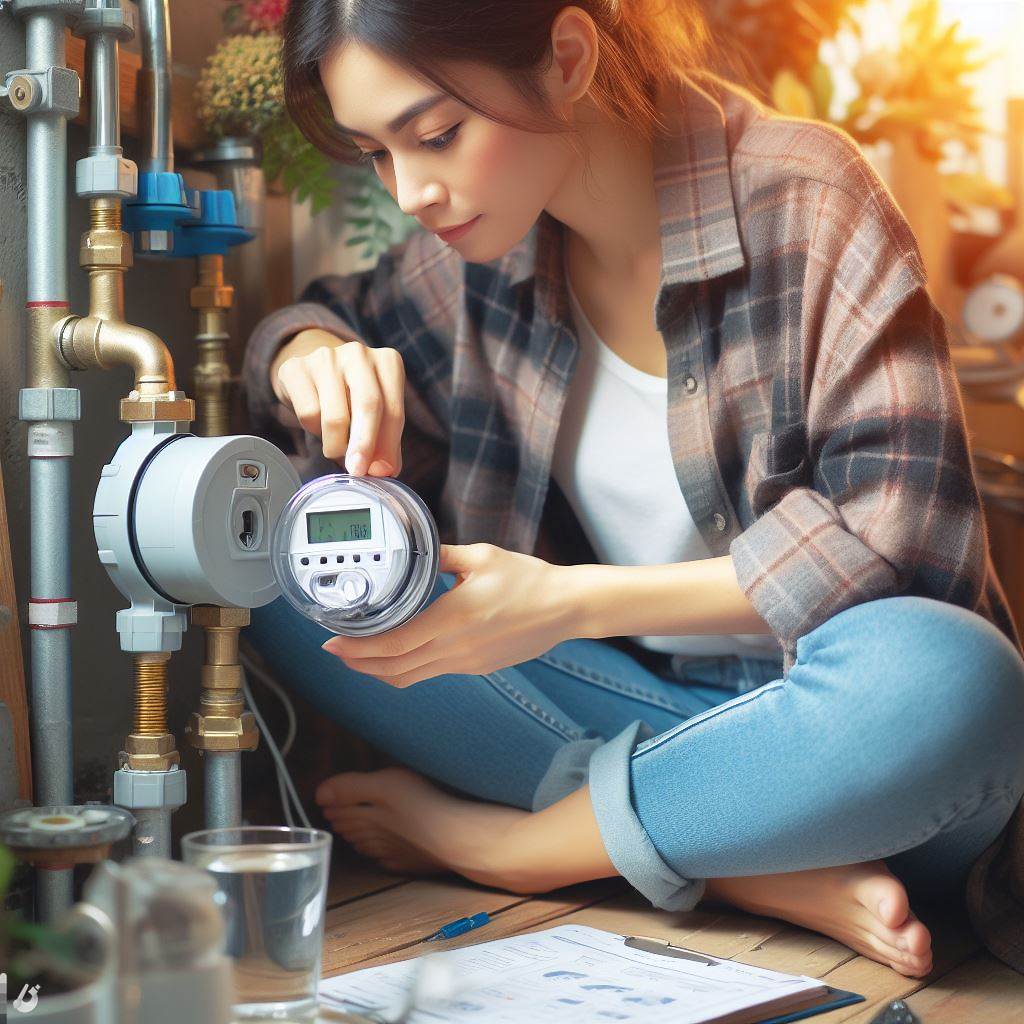Introduction
In the intricate realm of plumbing, the paramount importance of safety cannot be overstated, particularly for professionals navigating the unique challenges posed in the Australian context. lets explore the pros plumbing safety.
Practitioners must prioritize safety in plumbing, a legal and foundational necessity for successful projects, spanning installations to repairs.
In this blog post, we embark on a comprehensive exploration of the multifaceted facets of plumbing safety within the Australian landscape.
Through an in-depth analysis, we aim to shed light on the critical considerations, regulations, and best practices that underpin a secure and risk-mitigated work environment for plumbing professionals.
By delving into the nuances of safety protocols and guidelines, we aspire to empower Australian plumbers with the knowledge and tools necessary to navigate their responsibilities with confidence and competence.
The purpose of this blog post extends beyond mere elucidation; it is a proactive endeavor to foster a culture of safety consciousness within the Australian plumbing community.
As we navigate the intricate labyrinth of plumbing safety, our primary goal is to equip professionals with insights that transcend the conventional understanding of safety protocols.
We actively explore industry challenges, trends, and laws, inspiring commitment to higher safety standards through informative resources.
In essence, this blog post serves as a beacon for Australian plumbing professionals, illuminating the path toward a safer and more secure work environment.
Weaving informative insights and a forward-looking perspective, we invite readers to explore plumbing safety actively, prioritizing it in professional practice.
General Safety Tips
Wearing appropriate personal protective equipment (PPE)
- Wear safety goggles, gloves, and steel-toed boots to protect yourself from potential hazards.
- Always wear a hard hat to safeguard your head from falling objects or overhead hazards.
- Use earplugs or earmuffs to prevent hearing damage when working in noisy environments.
- Don’t forget to wear a properly fitted dust mask or respirator to avoid respiratory issues.
Maintaining good hygiene and cleanliness
- Wash your hands thoroughly with soap and water before and after handling any plumbing materials.
- Keep your work area clean and organized to prevent accidents and the spread of bacteria.
- Dispose of plumbing waste and debris properly to maintain a safe and clean working environment.
- Regularly clean and maintain your work tools and equipment to ensure their efficiency and safety.
Being aware of potential hazards in the workplace
- Identify and evaluate potential hazards in your work area, such as slippery floors or exposed electrical wires.
- Ensure proper signage and warning labels are displayed to highlight potential dangers.
- Report any unsafe conditions or incidents to your supervisor immediately.
- Stay alert and aware of your surroundings at all times to avoid accidents.
Properly using and storing tools and equipment
- Always follow the manufacturer’s instructions when using tools and equipment.
- Inspect your tools before each use to ensure they are in good condition and working properly.
- Properly store tools and equipment in their designated places to avoid tripping hazards and damage.
- Keep sharp tools in protective covers or sheaths to prevent accidental cuts or injuries.
By following these general safety tips, Australian plumbing professionals can minimize the risk of accidents and injuries during their work.
Safety Measures During Plumbing Installation
In order to ensure a safe and secure plumbing installation, Australian professionals should follow these safety measures:
Ensuring a Safe Work Environment
- Keep the work area clean and free of any obstacles or hazards.
- Use appropriate personal protective equipment like gloves, safety glasses, and protective clothing.
- Follow electrical safety protocols, such as turning off power sources before working near electrical components.
- Establish communication channels with other workers to avoid accidents and coordinate tasks effectively.
- Regularly inspect tools and equipment for any potential defects or damage.
Checking for Gas Leaks before Starting Work
- Use a gas leak detector or soapy water to identify any gas leaks in the vicinity.
- If a gas leak is detected, evacuate the area immediately and contact the relevant authorities.
- Avoid using open flames or creating sparks until the gas leak has been resolved.
- Always follow the Australian standards and regulations regarding gas installations to ensure safety.
Installing Plumbing Fixtures Securely
- Ensure that all plumbing fixtures, including pipes, taps, and valves, are properly secured and leak-proof.
- Use the correct seals and fittings for each fixture to prevent leaks or potential water damage.
- Follow manufacturer’s instructions and guidelines during the installation process.
- Perform frequent checks on installed fixtures to identify and address any issues promptly.
Proper Handling and Disposal of Construction Debris
- Have designated containers for construction debris, such as old pipes, fittings, and packaging materials.
- Dispose of construction debris responsibly, following the local waste management regulations.
- Prevent debris from accumulating in work areas, as it can pose tripping hazards and impede work progress.
- Regularly clean and organize the work area to maintain a safe and efficient environment.
By adhering to these safety measures, plumbing professionals in Australia can minimize the risk of accidents and ensure a secure plumbing installation process.
Safety Precautions during Repairs and Maintenance
In order to ensure the safety of plumbing professionals during repairs and maintenance, it is important to follow a set of safety precautions. Here are some essential steps to take:
Identifying and isolating water sources
Before starting any repair or maintenance work, it is crucial to identify and isolate the water sources.
This can prevent any unexpected water flow and minimize the risk of water damage.
Make sure to locate the main shut-off valve and close it to stop the water supply to the entire building.
Additionally, check if there are any additional valves that need to be closed in order to isolate the specific area where the work will be carried out.
Shutting off electrical power, if applicable
In situations where electrical power is involved, it is necessary to shut off the power before starting any plumbing work.
This is to avoid the risk of electric shocks or other electrical hazards.
Locate the electrical panel or circuit breaker box and identify the circuit that controls the area where the repairs or maintenance will take place.
Switch off the corresponding circuit breaker to cut off the power supply.
Following proper lockout/tagout procedures
Lockout/tagout procedures are designed to prevent accidental startup or release of stored energy during maintenance activities.
Following these procedures is essential to ensure the safety of plumbing professionals.
Before beginning any work, lock and tag out any relevant equipment or machinery.
This involves using lockout devices, such as padlocks, to immobilize the equipment and placing warning tags to inform others that work is in progress.
Using appropriate tools and equipment for the job
Using the right tools and equipment is crucial for both the efficiency and safety of plumbing repairs and maintenance.
It is important to select tools that are specifically designed for the task at hand.
Ensure that the tools are in good working condition and free from defects or damage.
It is also essential to use personal protective equipment (PPE), such as safety goggles, gloves, and protective clothing, to protect against potential hazards.
By carefully following these safety precautions, plumbing professionals can significantly reduce the chances of accidents or injuries during repairs and maintenance.
Safety should always be a top priority in the plumbing industry.
Read: Carpentry 101: An Aussie’s Guide to the Trade
Safety Guidelines for Working with Hazardous Materials
In the plumbing industry, professionals often come in contact with hazardous materials during their work. It is crucial to follow safety measures to protect yourself and others.
Here are some guidelines to ensure your safety when working with hazardous materials:
Handling and Storing Chemicals Safely
- Always wear appropriate personal protective equipment (PPE) when handling chemicals.
- Read and follow the manufacturer’s instructions for proper handling and storage of chemicals.
- Store chemicals in properly labeled containers and away from sources of ignition.
- Avoid mixing chemicals unless instructed by professionals and follow proper dilution procedures.
- Regularly inspect storage areas and containers to identify any leaks, damage, or deterioration.
Proper Ventilation and Use of Respiratory Protection
- Ensure the workspace has adequate ventilation to minimize the concentration of hazardous fumes.
- If working in an enclosed space, use mechanical ventilation systems or wear appropriate respiratory protection.
- Choose respirators that fit well and provide adequate protection against the specific chemicals you are working with.
- Regularly clean and maintain respiratory protection equipment to ensure its effectiveness.
Avoiding Direct Contact with Hazardous Substances
- Wear appropriate gloves, goggles, and other protective clothing to prevent direct contact with hazardous substances.
- Learn about the different types of chemicals you may encounter and their specific hazards.
- If contact with chemicals occurs, promptly wash the affected area with water and seek medical attention if necessary.
Disposing of Waste Materials Properly
- Follow the regulations and guidelines for proper disposal of hazardous waste materials.
- Separate and label different types of waste materials to ensure appropriate disposal methods.
- Only dispose of hazardous materials in approved containers and designated disposal areas.
- Consider recycling or reusing materials when possible to minimize waste generation.
- Train your team on the proper procedures for waste disposal and ensure compliance.
By strictly adhering to these safety guidelines, Australian plumbing professionals can significantly reduce the risks associated with working with hazardous materials.
Remember, your safety and the safety of those around you should always be a top priority.
Read: Plumbing Maintenance Tips for Aussie Homes

See Related Content: Welding in Australian Shipbuilding: A Focus
Your Personalized Career Strategy
Unlock your potential with tailored career consulting. Get clear, actionable steps designed for your success. Start now!
Get StartedSafety Practices when Working in Confined Spaces
Assessing the risks associated with confined spaces
- Identify potential hazards such as lack of oxygen, toxic gases, or flammable materials.
- Evaluate the space’s size, configuration, and conditions to determine risks.
- Consider the presence of any biological or physical agents that could pose a danger.
Proper training on safe entry and exit procedures
- Ensure all workers undergo comprehensive training specifically addressing confined space operations.
- Teach employees about the importance of following established protocols to minimize risks.
- Provide instructions on how to properly use personal protective equipment (PPE) when entering confined spaces.
- Implement a buddy system and emphasize the significance of constant communication while inside.
Ensuring adequate ventilation and communication
- Prior to entry, establish proper ventilation systems to ensure a safe and breathable atmosphere.
- Utilize fans, blowers, or natural ventilation methods to remove hazardous gases or fumes.
- Install communication devices, such as two-way radios, to maintain constant contact with workers in confined spaces.
- Regularly test these communication devices to verify their effectiveness and reliability.
Regular equipment inspections and maintenance
- Conduct routine inspections of all equipment used in confined spaces, including PPE and safety harnesses.
- Ensure all equipment is in good working condition and free from defects.
- Regularly service and maintain ventilation systems to guarantee their optimal performance.
- Keep detailed records of equipment maintenance and promptly address any identified issues.
Working in confined spaces can pose serious risks to plumbers, but by following proper safety practices, these risks can be minimized.
Assessing the risks associated with confined spaces is essential in developing appropriate safety measures.
Plumbers should receive comprehensive training on safe entry and exit procedures, including the proper use of PPE.
Adequate ventilation and communication systems must be established before entering confined spaces, and regular equipment inspections and maintenance are crucial in ensuring a safe working environment.
Read: DIY Plumbing: What Aussies Should Know
Learn More: Famous Australian Projects by Carpenters
Emergency Preparedness and Response
Familiarizing with emergency procedures and exit routes
- Take the time to learn the emergency procedures specific to your workplace.
- Know where the exits are located and have a clear understanding of the evacuation routes.
- Ensure that all employees are educated on the emergency procedures and exit routes.
- Regularly review and update these procedures to ensure they remain relevant and effective.
Keeping a well-stocked first aid kit on site
- Have a fully equipped and up-to-date first aid kit available at all times.
- Ensure that the kit contains essential items such as bandages, antiseptics, and pain relievers.
- Regularly check and replenish supplies to avoid running out of necessary items.
- Train employees on how to use the first aid kit and administer basic first aid when needed.
Knowing how to handle common plumbing emergencies
- Be familiar with the most common plumbing emergencies that can occur on a worksite.
- Develop a plan of action for each type of emergency, including steps to minimize damage and ensure safety.
- Train employees on these protocols and regularly conduct drills to practice their response.
- Have a list of reliable plumbing professionals who can be contacted in case of complex emergencies.
Contacting emergency services when necessary
- Ensure that all employees know how to contact emergency services for immediate assistance.
- Have emergency contact numbers clearly displayed in easily accessible areas.
- Instruct employees to remain calm and provide detailed information when reporting emergencies.
- Encourage employees to report any potential hazards or safety concerns promptly to prevent emergencies.
By prioritizing emergency preparedness and response, plumbing professionals can safeguard their worksites and ensure the well-being of their team members.
Remember, effective emergency procedures and prompt action can save lives and minimize property damage.
Read: Costs of Plumbing Services in Australia
Delve into the Subject: Top Aussie Building Codes & Compliance Tips
Find Out More: Smart Plumbing: Tech Advances in Australia
Conclusion
Undoubtedly, underscoring the paramount importance of prioritizing safety within the plumbing profession emerges as a fundamental and non-negotiable aspect.
It is not merely a procedural consideration; rather, it stands as an ethical imperative, acknowledging the profound impact that plumbing practices can have on public health and safety.
In our exploration of plumbing safety, we’ve traversed the intricate landscape of this profession, recognizing that safety is not an ancillary concern but a linchpin that fortifies the foundation of professional integrity.
The commitment to safety must permeate every level of practice, from apprentice to seasoned professional, creating a shared responsibility for maintaining the highest standards of well-being.
We carefully review crucial safety tips tailored for Australian plumbing professionals, actively instilling these principles into daily operations.
Each safety tip serves as a beacon, guiding practitioners through the dynamic challenges inherent in the plumbing field.
This comprehensive recapitulation is not just a checklist; it is a testament to our dedication to fostering a culture of continuous improvement.
By reaffirming these safety guidelines, we aim to create an environment where safety is not just a regulatory requirement but an ingrained ethos.
In doing so, we lay the groundwork for a future where the plumbing profession thrives on a commitment to safety, transcending mere compliance to become a beacon of excellence in professional practice.




